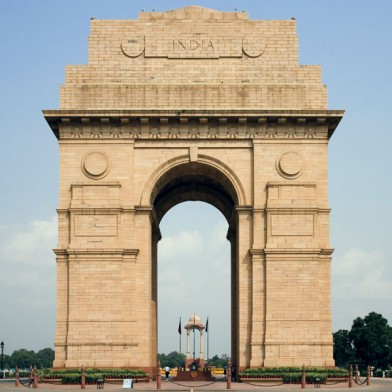What does it mean to be a Generation 1.5 or 2.0 Kiwi Indian in 2021? New voice Shriya Bhagwat gives Asia Media Centre her perspective.

Author Shriya Bhagwat
Flying over oceans and continents used to be real. Many years ago, I took several such flights and stumbled off the plane into Aotearoa New Zealand, bedraggled and suitably flattened by jetlag.
A unique tribe quietly stepped up to hold my hand. The Gen 1.5 and Gen 2.0 Kiwi-Indians from a community with a median age of 30 that at last count stood at 239,193 per Stats NZ.
Gen 1.5 Kiwi-Indians are neither here nor there. They were born overseas but now live here in New Zealand. They walk in two worlds, and I’m stunned by their easy flexibility, starting with their ability to move between two accents in English – one for at home with their Indian parents and one for their Kiwi friends. Plus, they often use more than one Indian language for added decoration, peppering their speech with words and phrases that don’t have convenient translations.
Gen 2.0 Kiwi-Indians are born here, but they are rooted to Indian culture in their homes, in the community, and exposed to it through pop-culture.
A quick google search shows there is no consensus on the use of generational labels. The definitions are imperfect, imprecise, and ultimately superfluous because Kiwi-Indians have turned the ambiguity of their identity into their superpower. They do not ask to belong. They are creating their own world with style and sass.
The Kiwi-Indian community gave me ready smiles in a sea of faces, familiar strangers at community events. We don’t just share a common heritage; we are also often bound by similar challenges and heartbreaks. All of us grappling with own struggles in our own ways.
This tribe recognised my frustrations and offered me empathy, voiced in Kiwi slang. Thus charmed, how could I not forget my troubles even momentarily? We were in this together, they said; but they have never once said, "I told you so" when I made rookie mistakes like being utterly confused at the concept of bring a plate or the meaning of tall poppy syndrome. Everyone is a rookie sometime; they reassured me adding, “you do you”.
Gen 1.5 and Gen 2.0 deserve louder applause and closer attention. Starting with their Kiwi-Indian approach to Indian food evolved from traditional ways.
Their love for dal is fascinating, yet they turn up their noses at Indian veggies; that’s confounding. Their way of tackling an Indian meal, especially if it’s a thali, by defying tradition and eating each element separately is a particularly hard for a Gen 1.0 to watch.
In the safe spaces of curry groups on social media, their memes immortalising desi life, desi parents and desi living feel affirming in a world where I don’t always see people like me on stage and screens.
It’s a masterclass in subversion when Kiwi-Indians joke amongst themselves about converting their Indian names into ludicrous English options. If I grimace in horror, Gen 1.5 and Gen 2.0 laugh and clarify with “joke” and earnest assurances of, “we would never do that”. Their unspoken but shared understanding of the importance of their names, the meaning the names carry as markers of their Indian heritage, yet not taking themselves too seriously is a hit of joy to my heart.
So honest about their own struggles, conflicts, and tensions, of walking in two worlds, yet so proud, resilient, and hopeful.
The understanding Gen 1.5 and 2.0 Kiwi-Indians extend to their elders, and the way even the youngest of them navigate the world-views between generations is heroic. I’ve seen them calling out problems within our community in constructive ways, something even seasoned folk often fail at. This is service at its best.
In her recent book, Invisible – New Zealand’s History of Excluding Kiwi-Indians, Dr. Jacqui Leckie talks about the forms of subtle, nebulous discrimination faced by Indians since the very first waves of immigration in the late 19th century. Gen 1.5 and gen 2.0 already know this from stories told by their parents and from their own lived experience. Sometimes, the discrimination isn’t subtle; it is open hostility or anti-immigration sentiment.
Instead of letting those negative experiences colour their view of the world, they put on their game face and pick up the slack and celebrate their culture. They do this by gently clarifying that there is no such thing as chai-tea: there is either chai or there is tea. When they explain the meaning of naan-bread on menus because naan means bread. And of course, by refusing to shell out cash for turmeric lattes because their desi parents would completely lose it knowing their offspring paid money for what could easily be made at home by adding a bit of turmeric to hot milk along with a bit of dried ginger powder. Tumeric latte aka haldi-dhoodh.
I owe a lot to this formidable tribe. During a global pandemic with my own family far away they were my family offering love, support and checking in on me with their trademark humor.
So, thank you to the Gen 1.5-ers and Gen 2.0-ers in my life. The world is richer because of your service, your generosity, and your grace.
- Asia Media Centre


